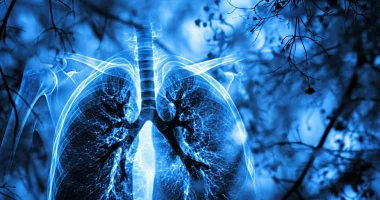Alagille syndrome is a rare condition that runs in families and mainly affects the liver. It happens because the liver can’t get rid of bile properly. Bile is a digestive fluid that helps break down fats and contains acids, electrolytes, and other matter. In people with Alagille syndrome, there aren’t enough bile ducts to drain the bile, leading to problems.
Although Alagille syndrome mostly impacts the liver, it can also cause issues in other areas of the body. This includes the kidneys, eyes, heart, and bones.
Signs and Symptoms
Alagille syndrome can cause many different symptoms because it affects several parts of the body. The first signs usually appear shortly after a baby is born. These can include problems with bile run from the liver, known as cholestasis, which leads to jaundice (yellowing of the skin and eyes). Babies with this condition often have trouble gaining weight and growing properly. They may also experience severe itching, known as cholestatic pruritus, and have unusual heart sounds called heart murmurs. Some babies are born with heart defects. Their eyes may show a thicker ring around the cornea, and their stool might be pale while their urine is dark. The liver and spleen might also become enlarged, and certain blood vessels can be narrower than normal. Low oxygen levels in the blood, due to a heart condition called cyanotic heart disease, can cause the skin to appear bluish. Other possible symptoms include developmental delays, loss of bone mass, and fat deposits under the skin.
Because Alagille syndrome affects multiple body systems, it can lead to various complications that range from mild to severe. These complications depend on which parts of the body are affected and how severely they are impacted. For example, issues with the liver and bile flow can lead to ongoing jaundice and severe itching, while heart defects can cause significant problems with heart function and oxygen levels in the blood. Developmental delays can affect learning and growth, and narrow blood vessels can impact blood flow and pressure. Managing Alagille syndrome often requires a team of healthcare professionals to address the wide range of symptoms and complications that can arise.
Causes of Alagille Syndrome
Alagille syndrome is a genetic disorder, meaning it is passed down from parents to their children. It happens because of changes, or mutations, in two specific genes, called JAG1 and NOTCH2. These genes are responsible for creating a protein that plays a crucial role in a process known as the Notch signaling pathway. It is essential for proper development in a fetus.
When the NOTCH2 or JAG1 genes mutate, the Notch signaling pathway doesn’t work correctly, leading to various developmental problems. Alagille syndrome is an autosomal dominant condition, which means that only one mutated copy of the gene is needed for a person to have the disorder. This mutated gene can come from either parent, and there is a 50% chance that a child will inherit Alagille syndrome if one parent carries the mutated gene.
Interestingly, sometimes a child can be born with Alagille syndrome even if neither parent has the condition. This happens because the gene mutation can occur spontaneously, meaning it happens by chance rather than being inherited from the parents.
Diagnosis of Alagille Syndrome
Diagnosing Alagille syndrome involves several steps because the condition affects multiple parts of the body.
Since the liver is almost always affected, one of the first steps is to check the liver for the number of bile ducts. This is done through a liver biopsy, where a small piece of liver tissue is removed and examined in a lab. Because nearly 89% of people with Alagille syndrome have too few bile ducts, this test is crucial for diagnosis.
To get a full picture of the condition, doctors also use other tests to examine different parts of the body. These tests include:
- Heart and Blood Vessels: Tests to look for structural problems.
- Eyes: An eye exam to check for specific eye symptoms.
- Spine: An X-ray to look at the spinal column.
- Abdomen: An ultrasound to examine organs in the abdomen.
- Kidneys: Tests to see the functioning of kidneys.
Treatment of Alagille Syndrome
Treating Alagille syndrome may be challenging because the severity of the condition can vary widely from one person to another. In mild cases, the main focus is often on ensuring proper nutrition to prevent malnutrition due to poor absorption of vitamins.
For infants and children who struggle to eat enough, a feeding tube may be necessary. Vitamin supplements are also important since people with Alagille syndrome often lack essential vitamins.
Medications can help manage specific symptoms. For instance, topical or oral medications can reduce severe skin itching and treat the fat deposits that can form under the skin.
Other treatment options include:
- IBAT inhibitors: These medications help reduce bile levels in the body.
- Medications to improve bile flow: These can help the liver function better.
- Surgery to repair bile ducts: This can improve bile drainage.
- Liver transplant: This may be necessary in severe cases where liver function is critically impaired.
- Partial external biliary diversion surgery: This involves connecting the gallbladder to an opening in the abdomen using a piece of the small intestine to help bile flow.
- Heart or kidney surgery: These procedures correct any structural or functional issues caused by the syndrome.
Each treatment plan is tailored to the individual, depending on the severity of their symptoms and which parts of the body are affected.
Managing with Alagille Syndrome
Managing with Alagille syndrome depends on how severe your symptoms are. If your symptoms are mild, managing the condition can be relatively straightforward as long as you take your prescribed medications correctly.
If you have severe complications, coping can be much harder. However, there are resources available to help you manage. For instance, the Liver Association of America offers a resource center that can assist you find online support groups. These groups connect you with others who are going through similar experiences, providing emotional support and practical advice.
Outlook
The outlook for someone with Alagille syndrome varies based on how severe their symptoms are. People with serious complications, like heart defects present at birth, severe liver disease, or blood vessel problems that can cause brain bleeds or strokes, generally have a more challenging prognosis.
Despite these challenges, many people with Alagille syndrome can live a normal life span. About 75% of those with the condition will live at least until age 20. While the disease can affect the quality of life, especially with severe symptoms, proper treatment, and management can help many individuals lead fulfilling lives.
Summary
Alagille syndrome is a genetic disease that happens because the liver’s bile ducts don’t work properly to transport bile out of the liver. Although the liver is the main organ affected, the disease can also impact the eyes, kidneys, heart, and bones.
Since Alagille syndrome affects different parts of the body, the symptoms can vary widely from person to person. Many people have mild symptoms, but the condition can also cause serious and life-threatening problems. Because of this, treatment is always needed to manage the disease and its complications.









